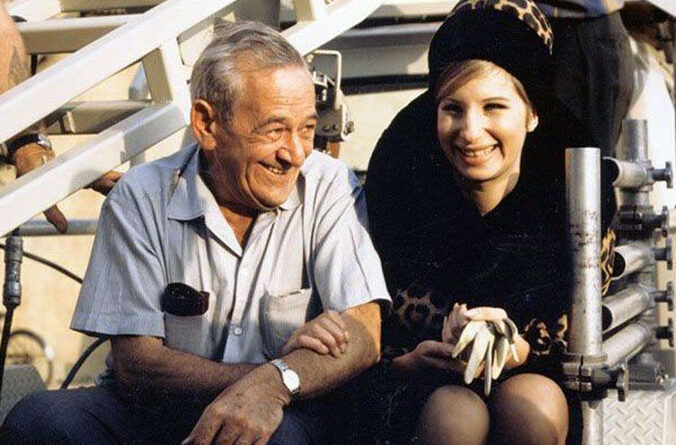Classic Hollywood: William Wyler

Haberdashery’s loss was Hollywood’s gain. Had William Wyler followed his father into the family business, Europeans might have looked stylish for generations, but the film business would have suffered greatly. Fortunately for us, Wyler was miserable selling suits and pocket squares in Paris, so his mother reached out to her first cousin Carl Laemmle in America. Carl ran a little operation called Universal Pictures. Would he be willing to hire her 18-year-old son “Willy?”
Arriving in New York in 1920, Wyler worked as an errand boy in the studio’s Manhattan office. A quick study, he rapidly scaled the entry-level-jobs food chain until it took him to the Universal lot in Los Angeles. By 1925, the 23-year-old whiz kid was directing his first two-reel Western, The Crook Buster. Over 30 shoot-em-up cowboy shorts followed – Wyler joked, “I used to lie awake nights trying to think up new ways of getting on and off a horse.”
Once Wyler completed his “B”-picture boot camp, “Cousin Carl” assigned him to an “A” release called Hell’s Heroes, one of six screen versions of the Western novel Three Godfathers. For the next half-decade, Wyler mastered his craft, bossing around big names like John Barrymore on Counsellor at Law (1933) and future wife Margaret Sullavan on The Good Fairy (1935).
In 1936, indie producer Samuel L. Goldwyn poached Wyler from Universal and put him on his payroll. They collaborated on – and clashed over – These Three, Dead End, Wuthering Heights, The Little Foxes, and Dodsworth, which earned Wyler the first of a record 12 Oscar nominations (and three wins) as Best Director. At Goldwyn’s company, Wyler also launched a seven-pic partnership with cinematographer Gregg Toland, who shot Citizen Kane after pioneering his signature “deep focus” technique working with Wyler.
On loan-outs to Warner Bros., Wyler mined Bette Davis’ indelible performances in Jezebel and The Letter. Davis later said, “I had known all the horrors of no direction and bad direction. I now knew what a great director was and what he could mean to an actress. I will always be grateful to him for his toughness and his genius…If Willy asked me to jump in the Hudson River, I would have!”
Wyler’s two most bankable hits bracketed World War II. In 1942, Mrs. Miniver, his epic tale of brave Brits battling the Nazi menace, received six Academy Awards, including Best Picture and Best Director. FDR and Winston Churchill loved the movie. In fact, Churchill told MGM studio chief Louis B. Mayer, “Mrs. Miniver is propaganda worth 100 battleships.” After serving in the U.S. Army Air Corps, Wyler made The Best Years of Our Lives (1946), a box-office smash that copped another set of Best Picture/Best Director Oscars for Wyler.
Despite his reputation as “90-Take Willy,” many stars owed their greatest reviews to him. Thirty-six actors were nominated for Oscars under Wyler’s command and 14 won, including Audrey Hepburn (Roman Holiday) and Barbra Streisand (Funny Girl) in their screen debuts. Charlton Heston spoke for many of his peers after his Best Actor win for Ben-Hur: “Doing a film for Wyler is like getting the works in a Turkish bath: You darn near drown, but you come out smelling like a rose.”
Other Wyler classics worth watching: The Heiress, Detective Story, The Westerner, The Desperate Hours, Friendly Persuasion, The Big Country, and The Children’s Hour.
Classic Hollywood posts appear bimonthly on The Music Hall blog.
